

Ahoy, Swashbucklers!
VCB-SKPR turns your audio into chaotic, glitchy gold—re-ordering, stretching and pitching slices of sound in real time perfectly sync'd to BPM. With built-in models of damaged CD behaviour and virtual circuit-bending chaos, it gives you textures you’ve never heard before.
Made with our VCB (Virtual Circuit Bending) technology.
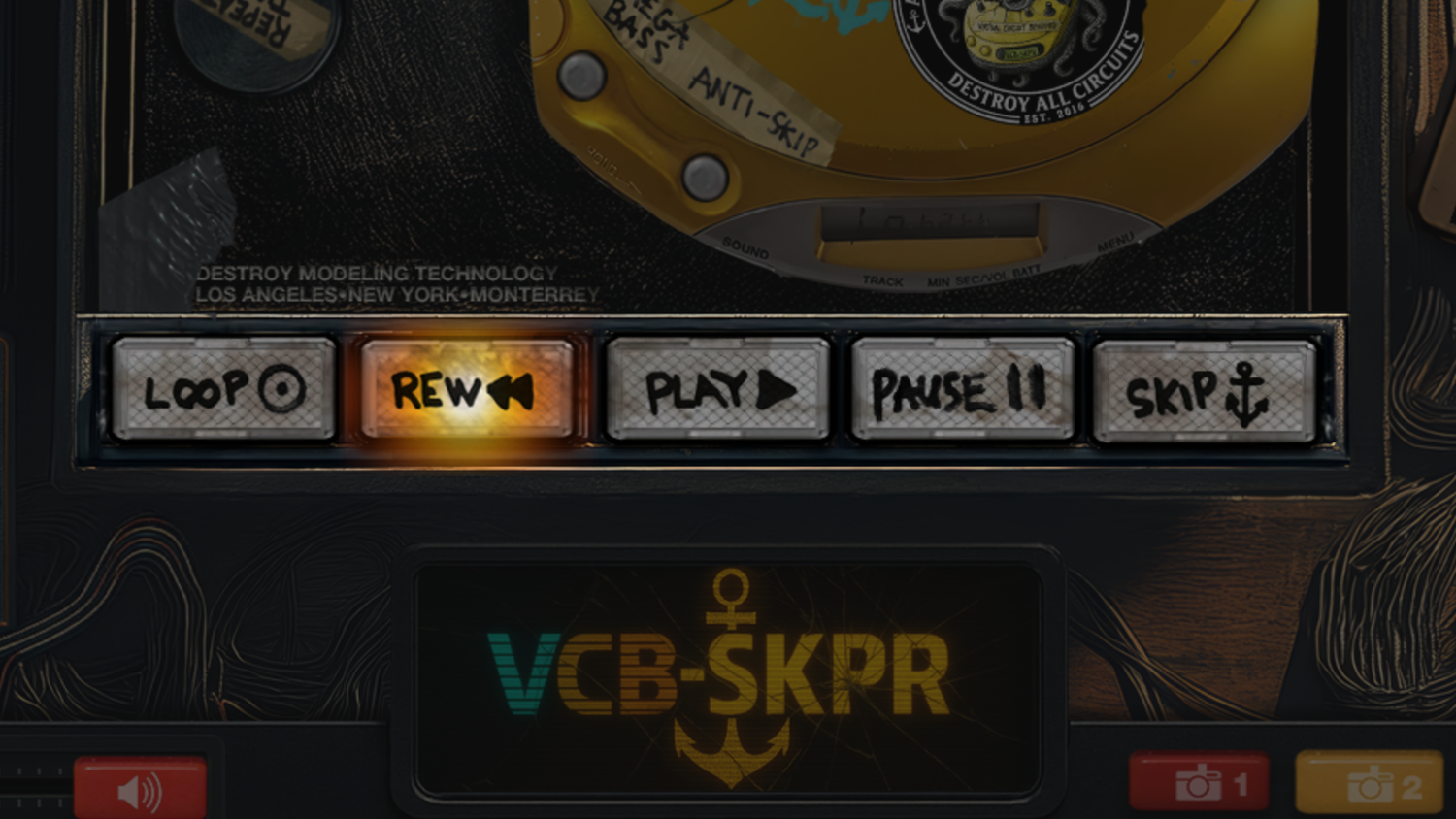
1. NAVIGATION BRIDGE (TRANSPORT)
Where Every Captain Charts Their Chaotic Course
This transport section channels the spirit of Oval's legendary album 94diskont, where Markus Popp, Sebastian Oschatz, Frank Metzger deliberately damaged CDs to create glitch music.
Oval's technique involved physically damaging or changing the surface of CDs to force the player's error correction to produce rhythmic artifacts and digital textures.
The Navigation Bridge provides five distinct playback behaviors that emulate various CD malfunction states:
Transport Modes:
- Loop – Continuously repeats selected audio segment
2. Reverse – Plays audio backwards from current position
3. Play – Single playback pass with pitch shifting capabilities
4. Pause – Freezes playback at current position, creating sustained repetition
5. Skip – Randomized jumping between different audio positions
Core Parameters:
- Repeat Rate – Stutter frequency (syncs to DAW tempo)
2. Repeat Time – Duration of each repeated segment (most audible in Pause mode)
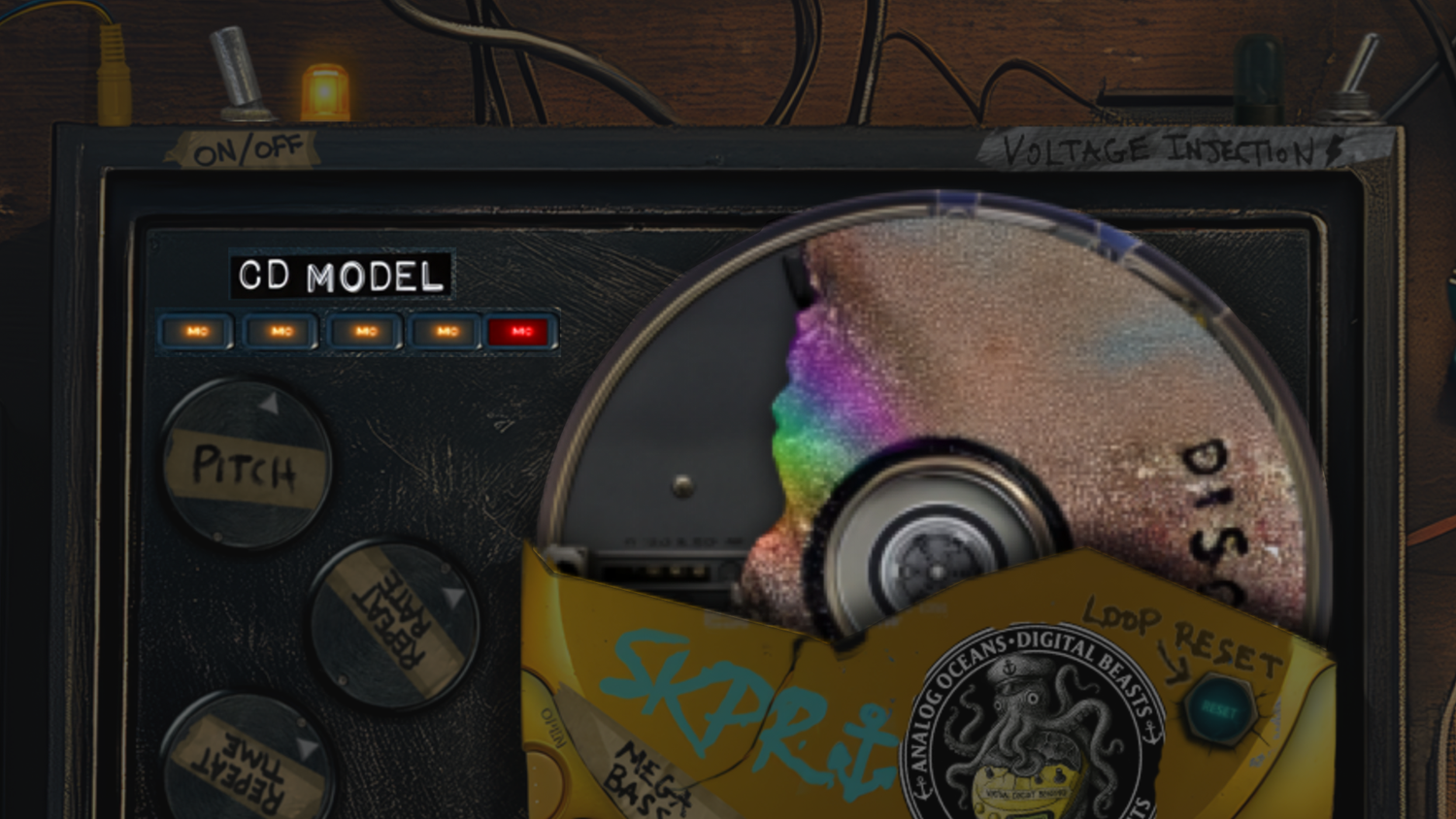
2. VESSEL CONDITIONS (CD MODELS)
Five Degrees of Digital Shipwreck
These models recreate the anti-skip behaviors studied by experimental sound artist Yasunao Tone, who created "wounded CDs" by applying scotch tape and ink to CD surfaces, forcing players into various error states.
- Clean – Your ship fresh from the digital dry dock, pristine and disappointingly well-behaved
- Clean Clicks – A few sonic barnacles on the hull, subtle artifacts from life at sea
- Lo-fi – Your vessel's weathered some storms (pitch clicks + 5% sample rate corrosion from salt spray)
- More Lo-fi – Battle scars and creaking digital timbers (stronger clicks + 10% electronic rust)
- Crashed – Full ghost ship mode: intense click distortion, lost bit-depth, and interpolation failure like your vessel hit a digital reef and kept sailing anyway
Every weathered vessel tells a different story, and these models simulate everything from pristine naval flagships to ghost ships barely holding together with digital duct tape and the prayers of long-dead audio engineers.
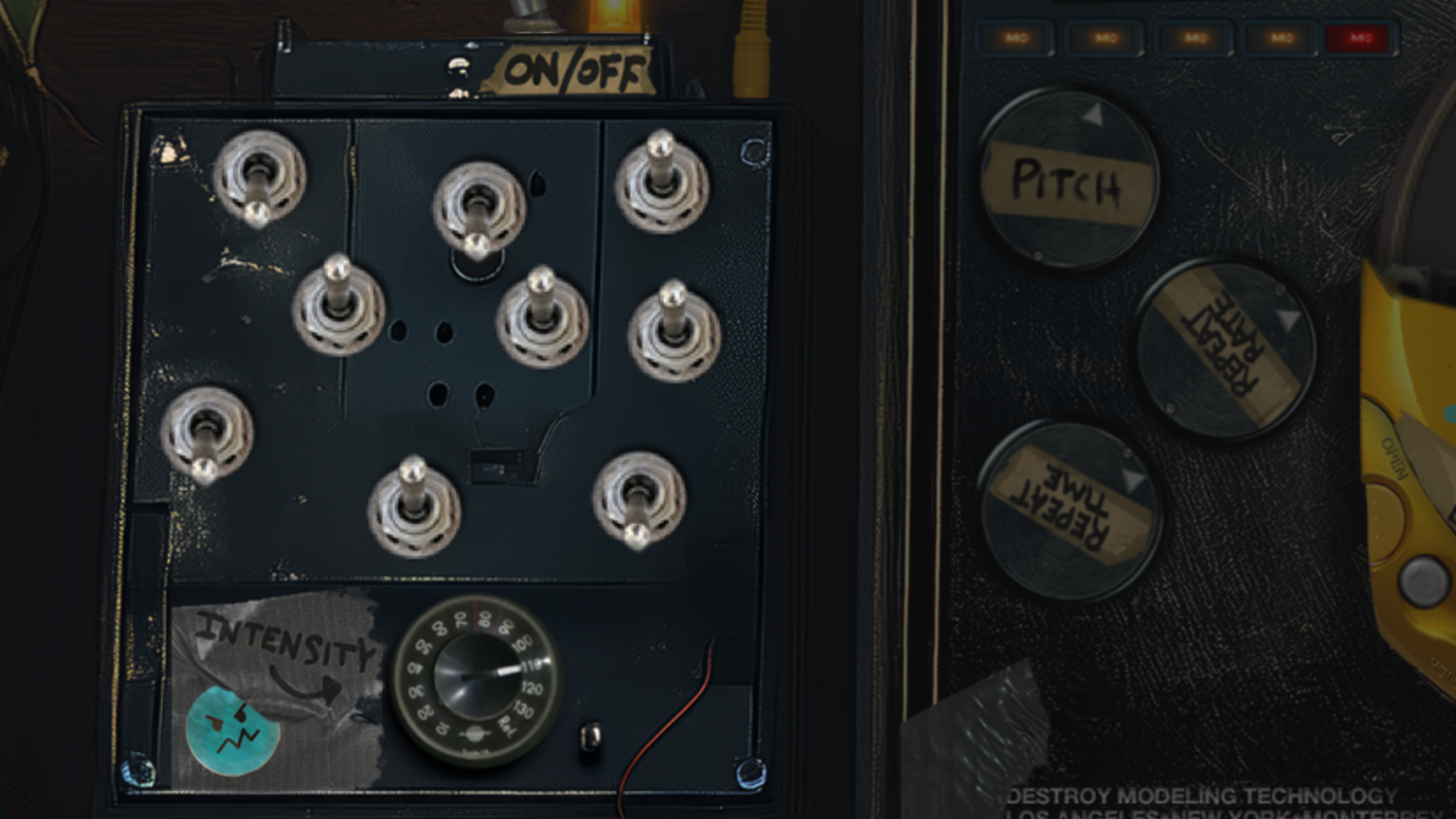
3. CHAOS COMPASS (CIRCUIT BENDING SWITCHES)
Digital Mutiny at Your Fingertips
The circuit bending switches scattered across your deck represent a convergence of legendary audio pirates. Here we honor Reed Ghazala, who coined the term "circuit bending" after accidentally short-circuiting a toy in 1966, and CD Bitch, an anonymous hacker who specifically circuit-bent the anti-skip protection mechanisms in portable CD players and Nicolas Collins who altered CD Players in the 80's.
Together, these pioneers mapped the territory we're now exploring digitally.
Switches 1–9 – Toggle secret navigational charts using our VCB (Virtual Circuit Bending) Technology.
Intensity – How hard you want to sail into the digital hurricane (multiplies all bending effects until your signal begs for mercy or starts speaking in tongues)
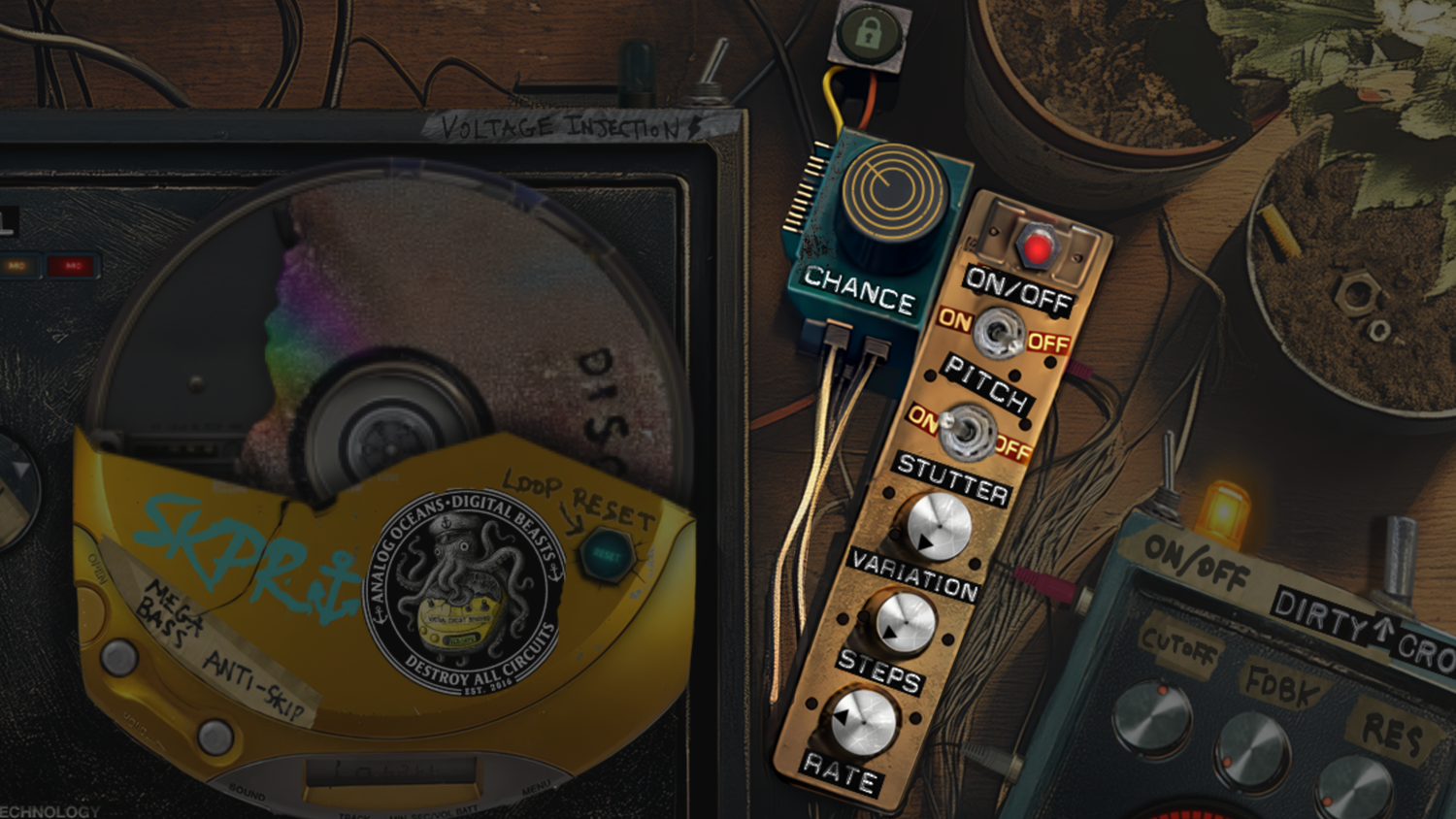
4. STORM GENERATOR (MUTATION SEQUENCER)
Where Rhythm Goes to Get Beautifully Lost
All hands on deck!
This mutation sequencer pays homage to Aphex Twin, Autechre, Squarepusher, White Whittle's Turing Machine and Alan Turing's mathematical madness of pattern theory. Those electronic admirals who proved rhythm doesn't need to follow maritime law.
- Stutter Switch – 50% chance your audio gets caught in digital crosswinds and starts repeating itself like a parrot with amnesia
- Pitch Switch – 50% chance of octave leaps like a ship jumping waves during a sonic hurricane
- Rate – Speed of your rhythmic storm system (how fast the chaos evolves)
- Steps – How many beats before the pattern repeats (or evolves into something unrecognizable)
- Chance – Likelihood of each cycle spawning new chaos instead of following orders
- Lock – Batten down your mutation pattern when you find sonic treasure worth keeping
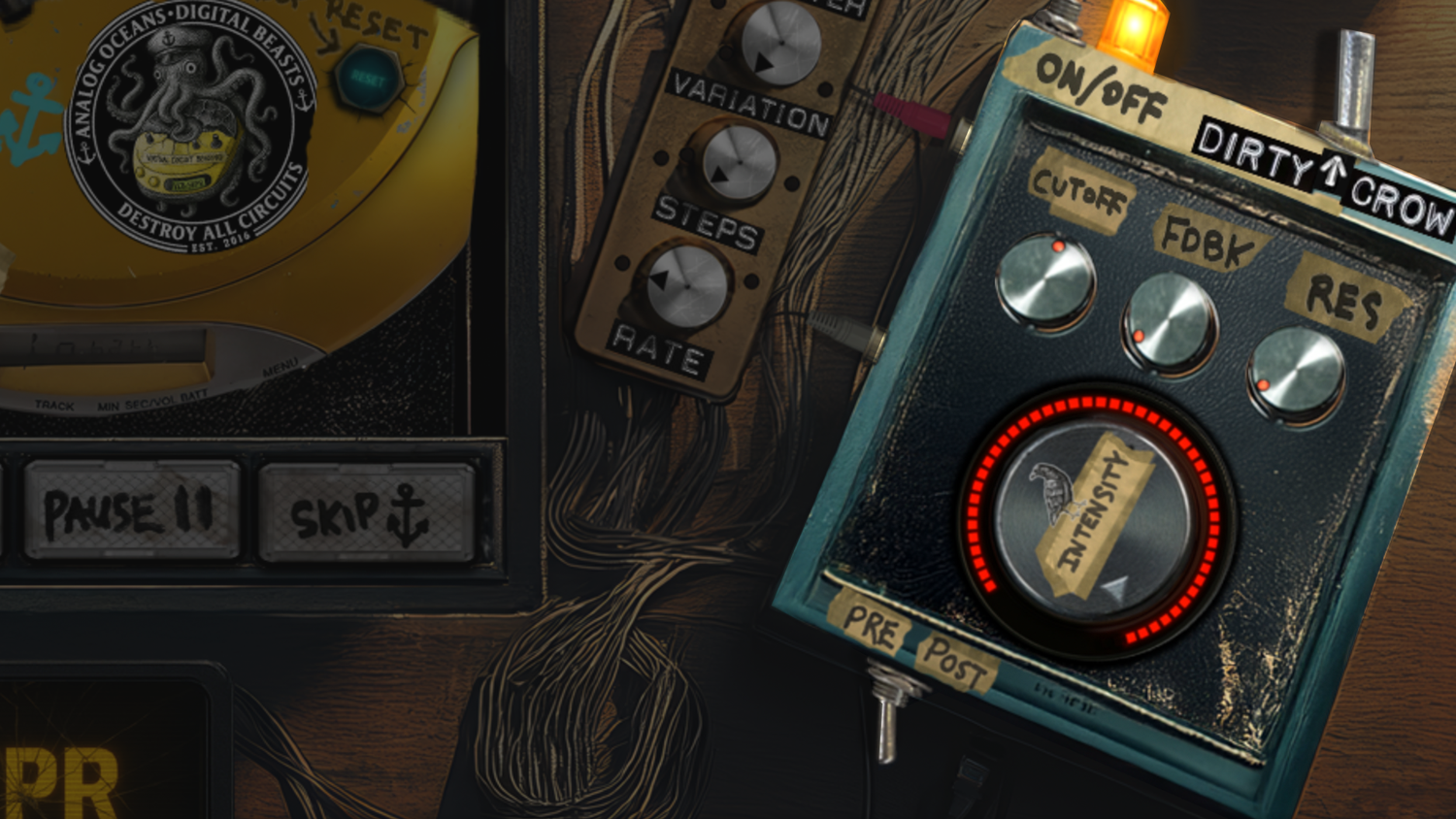
5. THE KRAKEN'S REVENGE (DIRTY CROW DISTORTION)
Feedback From the Depths of Audio Hell
The Dirty Crow distortion module is our Frankenstein's monster, assembled from countless feedback experiments and haunted by the restless spirit of the ZVEX Fuzz Factory—that unhinged little treasure chest that squeals, screams, and occasionally interrogates you about your deepest audio fears.
- Dirty Crow Mode Switch – Choose your level of nautical nightmare
Dirty = Controlled chaos (blended dry signal with civilized distortion for landlubbers)
Crow = Full kraken mode (intense resonance and beautiful destruction that'll make your speakers question their life choices)
- Intensity – How hard you want this beast to bite your signal (from gentle nibble to full digital mauling)
- Cutoff – Dual navigation filters (bandpass + highpass) to chart your frequency course through the storm
- Feedback – Global feedback that can summon digital sea monsters (self-oscillation warning: may cause spontaneous electronic possession!)
- Pre/Post – Whether chaos happens before or after your stutters (pre = raw hurricane in a blender, post = smoothed aftermath of digital carnage)
Fair warning: Don't answer when it speaks to you. Just sail through the storm and let this beast turn your pristine audio into something that sounds like it was recorded inside a hurricane made of broken amplifiers.
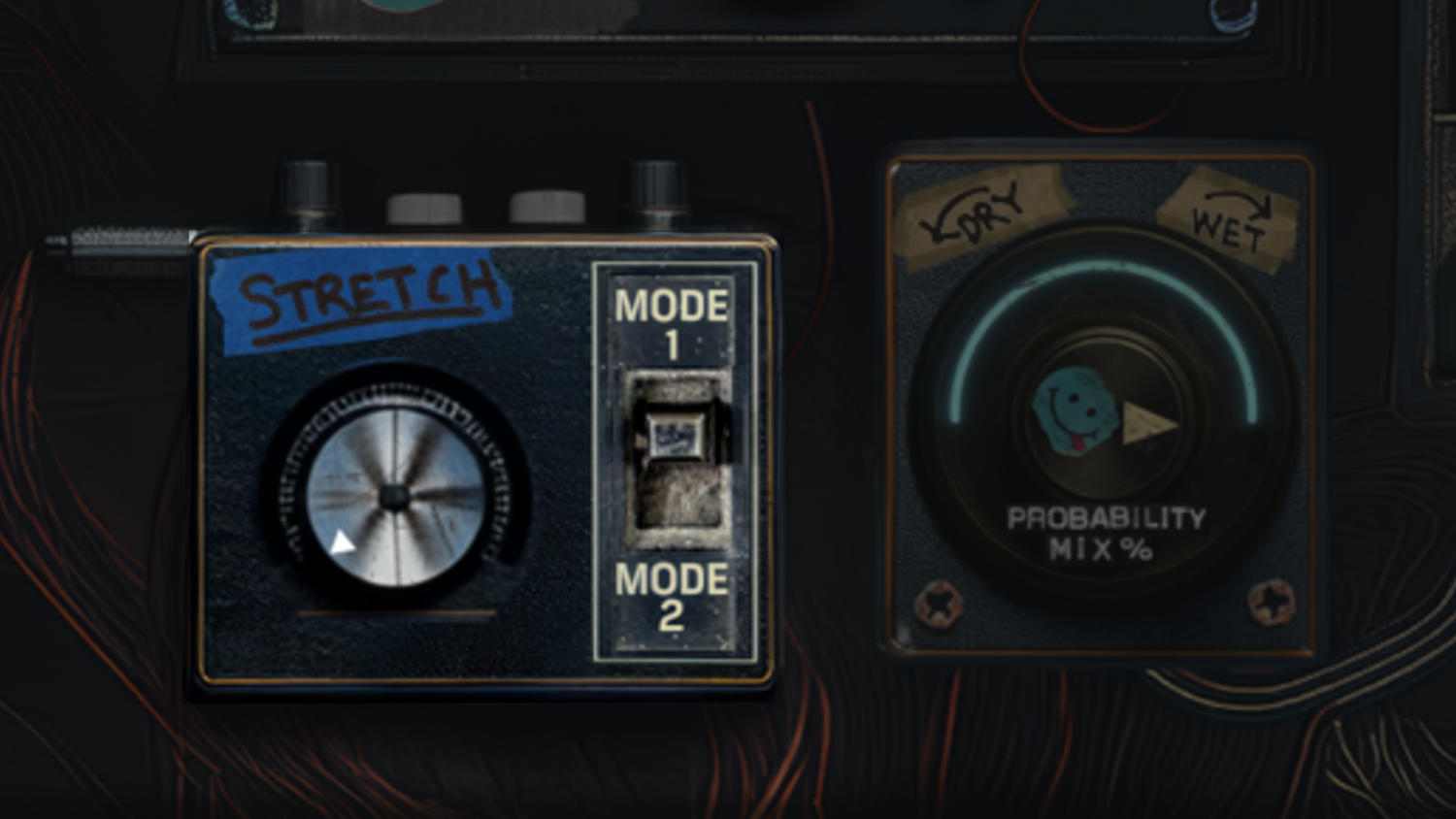
6. TIME DILATOR (STRETCH)
From seconds to oceans!
We present our most mystical instrument: the "Stretch" knob. This is our maritime love letter to Paul Nasca's Paulstretch—the time-warping algorithm that can take one measly second of audio and stretch it into an ambient ocean of eternity. It's like watching time itself take a deep breath and become the horizon.
Turn that mundane cowbell hit into an epic ambient voyage worthy of its own sea shanty.
Two Temporal Vessels at Your Command:
- Mode 1: Two-Grain Stretcher - No So Clean or precise time dilation (0–100% = infinite sonic loop of eternity)Perfect for clean ambient stretches with minimal bass that need that weathered, sea-worn character.
- Mode 2: Reverb Shimmering Multi-Grain– Cinematic, octave-shifted, reverb-soaked time distortion that's wavey, gravey, and shoe-gazey. Sounds like whales singing falsetto in a digital cathedral floating through a black hole. This mode works particularly well for bass-heavy sounds that need to become oceanic.

7. CHAOS PROBABILITY (DRY/WET GAMBLE)
Where Your Signal Flips a Coin Every Sample
Instead of gradual mixing, we've created a probability system that makes your audio flip a coin to decide: "Am I going through the chaos machine, or staying pristine?" And the best part? It's BPM synced, so no worries about sink holes.
Probability Control:
- Chaos Chance – Percentage likelihood that processed signal wins the coin flip (0-100%)
- 0% = Always dry (coward's setting)
- 50% = Pure chaos gambling (maximum uncertainty)
- 100% = Always wet (full commitment to the storm)

8. THE SEVEN SNAPSHOTS (SONIC MAP CHESTS)
Where Ideas Are Buried Like Treasure, Ready to Unearth Again
Love the sound you’ve conjured? Press the snapshot button for 2 seconds. Found a new monster on the horizon? Press another snapshot button. Toggle 'em back and forth like a storm-drunk captain chasing mermen through moonlit waters.
- 7 Snapshot Chests – Bury your favorite sounds like loot and unearth them instantly.
- One-Click Recall – Toggle between ideas faster than a seagull stealing your biscuit.
- Flow Unbroken – No preset menu purgatory, no duplicate plugin instances. Just instant voyage between inspirations.
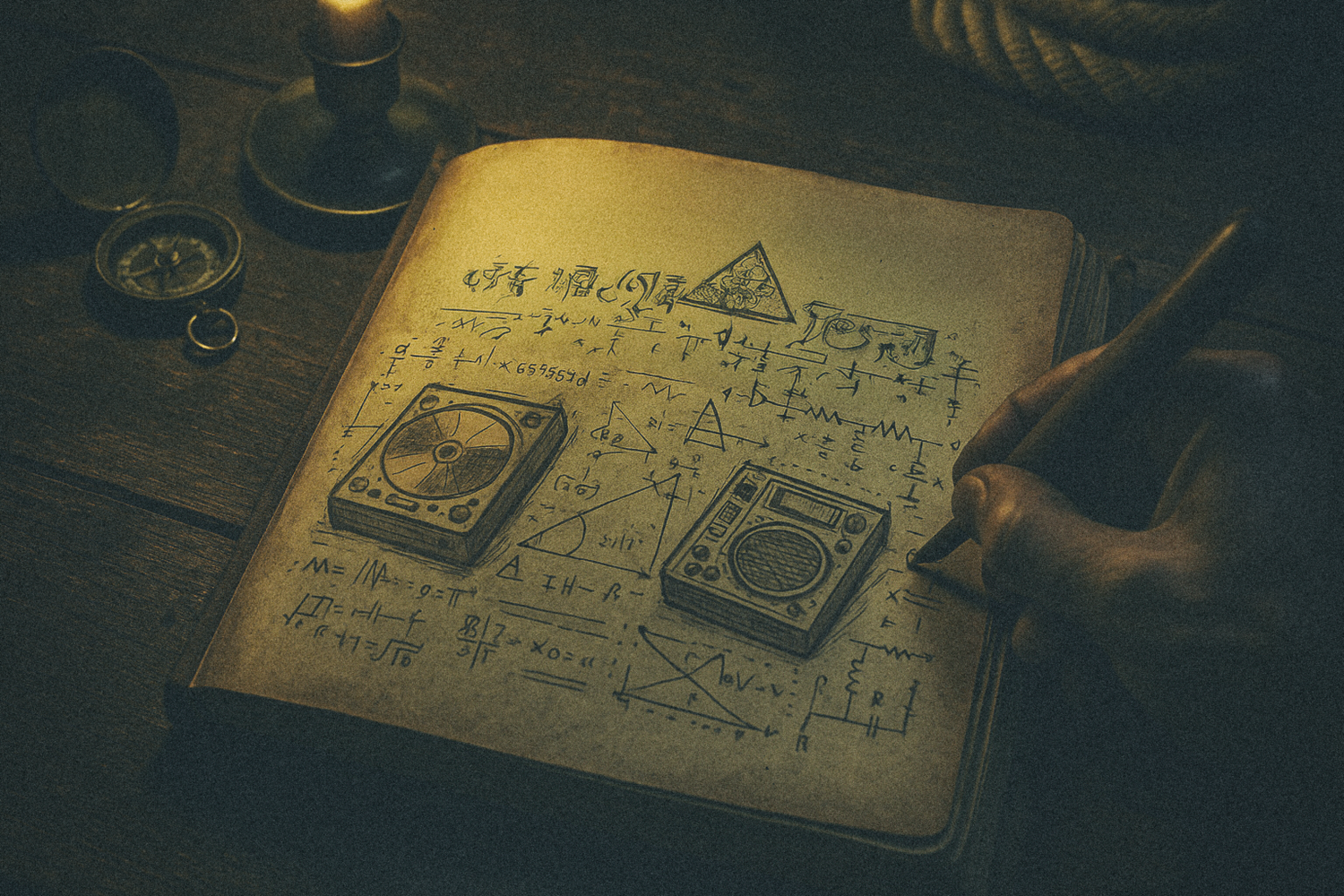
CAPTAIN'S LOG: The Evolution of Anti-Skip Warfare
A Brief History of RAM-Based Rebellion
1990–1993: The Lawless Seas (Pre-ESP Era) No protection, no mercy. Every bump meant instant sonic mutiny. These were the days when listening while walking was like sailing through a hurricane with no anchor.
1994–1995: First Defenses (ESP 1.0 Arrives) Sony launches their first Electronic Skip Protection with 3-10 seconds of RAM armor. Light protection for gentle voyages, but still vulnerable to serious storms.
1996–1998: The Great Buffer Wars (ESP2 Era) Buffer sizes grow to 1MB. RAM-based protection becomes serious business. Joggers finally get their sea legs.
1999–2001: The Golden Age of Anti-Skip (Mega Buffers) MP3-CD hybrids arrive with buffers up to 120 seconds. These ships become nearly unsinkable, able to weather any digital storm.
2002–2010: Overkill and Abandonment Skip protection reaches perfection just as everyone abandons ship for iPods and streaming. The CD player becomes a ghost vessel, perfect and forgotten.
2020–Present: Digital Necromancy Circuit benders like us raise these electronic spirits from their watery graves, turning their perfect anti-skip systems into instruments of beautiful chaos. What was once protection becomes our weapon of choice for sonic exploration.
Ready to set sail, Captain? Your digital crew of 100 broken Discmen awaits your command. Chart your course through these eight treacherous waters and discover what happens when skip protection becomes skip perfection.
Welcome to the VCB-SKPR Fleet

Enter your email below to be notified the moment the VCB-SKPR goes live!

